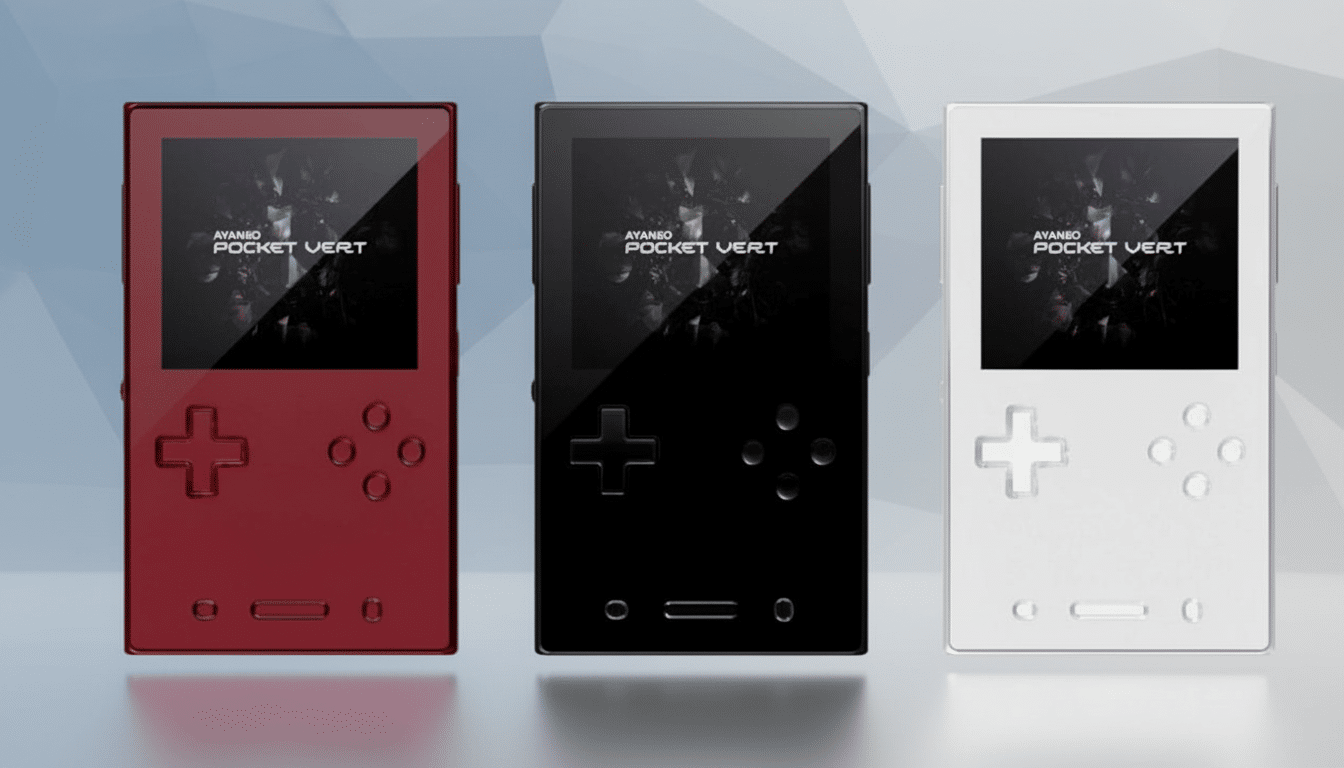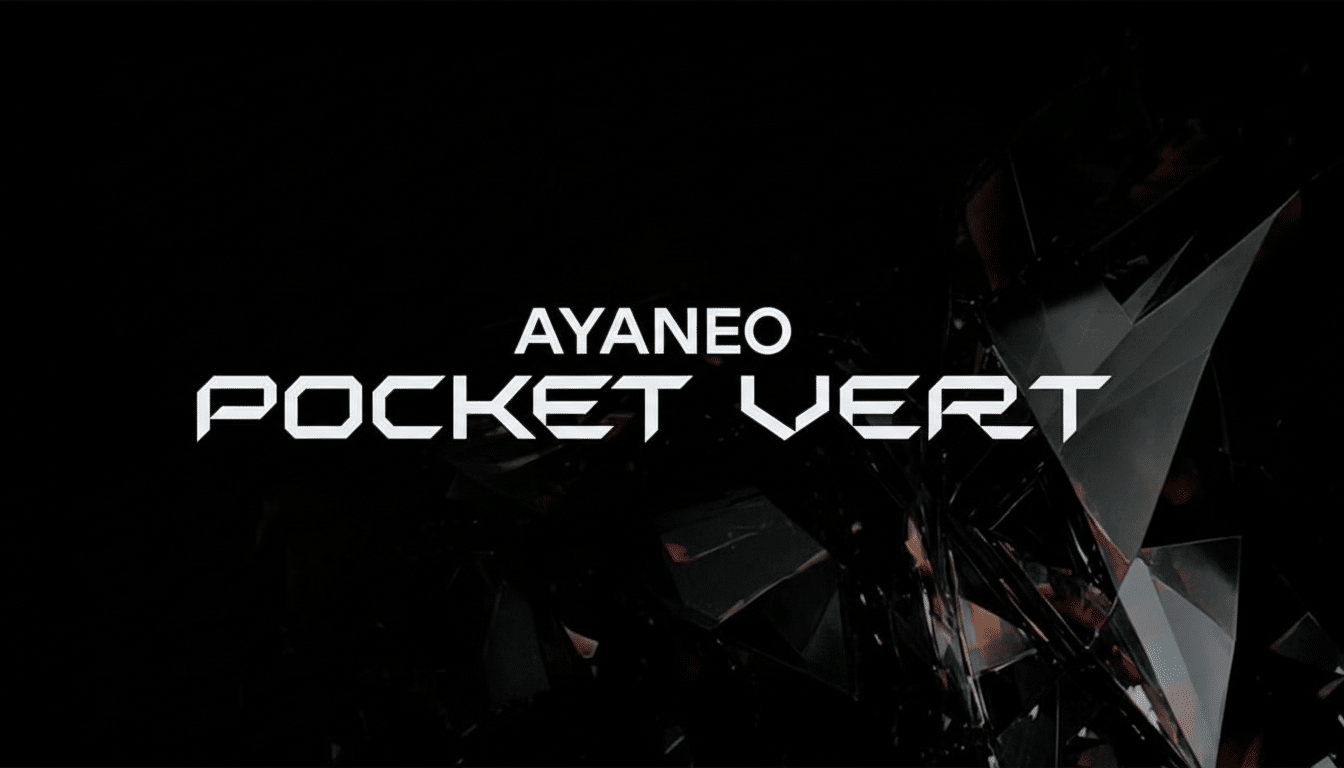AYANEO’s soon-to-be Pocket VERT handheld now offers a neat retro spin on the classic concept. Only 1/2-inch thick, the Game Boy-style device hides a full-width touchpad under its glass front, transforming an unassuming face into an unwarrantably versatile control surface without adding visual clutter.
The company teased the Pocket VERT with a clean, unbranded button layout and simple D-pad, but the secret touchpad is the star. It is programmable to function as the left or right stick, or both, and should mean finer control over camera work, in particular, for better aiming of your three-screen sprites than most classic-style handhelds can offer.

Invisible touchpad changes the game for controls
That isn’t like the exposed trackpad that AYANEO has on its Pocket DMG or the twin pads aboard Valve’s Steam Deck; this touch surface is hidden under glass. It runs across the lower front, below both the D-pad and face buttons, remaining latent during D-pad play but there for swipe and glide input when you want it.
That matters in a world where most Android and retro handhelds, even popular ones from Retroid and Anbernic, just have thumbsticks. A discreet pad can also serve to mitigate the compromise of playing a twin-stick shooter, 3D platformer, or menu-heavy RPG on a portable device. If the AYANEO software permits sensitivity curves and zoning, then you could split, for example, left half movement, right half camera, or maybe set a tap gesture as a quick function.
The advantage is not only control flexibility but also pocketability. By encasing the pad under glass, AYANEO is hiding protrusions while preserving a silhouette similar to the retro inspiration of handheld devices, with a modern input layer that is often omitted in small devices.
Premium build nods to classic Game Boy heritage
The nostalgic vertical form factor with an all-glass front and premium all-metal CNC body is here to stay with the Pocket VERT. AYANEO displayed three colorways, all embracing a minimalist, label-free aesthetic that makes the toy look more like a boutique audio player.
A side-mounted MagicSwitch wheel harks back to the volume control of the original Game Boy but with modern functionality: rotate for volume, press for mute, and long-press for a function menu. It’s a nice, elegant touch to include instant controls without cluttering the face.

Display and upscaling fidelity for retro handheld visuals
AYANEO claims the Pocket VERT uses a 3.5-inch LCD and can perform perfect 10x integer upscaling for the original Game Boy’s 160×144 resolution, explained by its consistent 10x factor using an internal panel resolution of 1600×1440, comparable to Analogue Pocket. It’s around 615 pixels per inch, which means that you get razor-sharp, grid-accurate pixels that are beloved by retro purists.
It also has integer scaling so sprites and text look crisp and consistent, with no shimmering or uneven pixel interpolation. Combined with the glass cover and precise assembly, the screen should deliver classic handheld libraries at a museum-grade level of clarity, but it still has to fit into the VERT’s tiny shape.
Battery capacity and early outlook for AYANEO Pocket VERT
The company confirmed a 6,000mAh battery, which is large for a 3.5-inch handheld.
For context, many retro-dedicated portables clock in between 3,000 and 5,000mAh; so the VERT’s got plenty of cushion that (again depending on the chip and OS) could translate into several hours of play with overhead.
AYANEO has not revealed which processor, software platform, pricing, or release window. Those variables will be used to determine if the VERT ends up as a high-end emulator, or a niche Android gaming device (or somewhere in between). But the hidden touchpad is the marquee innovation: a stealth control layer that maintains the retro profile while bringing in modern input schemes.
If the execution follows through on the concept, the Pocket VERT could be a new example of what I should come to expect from small-format handhelds — precision input, pocketable all-in-one design, and pixel-perfect display tech without imposing visible compromises on the front of the device.

